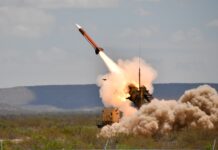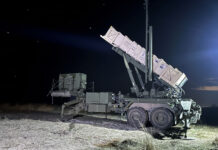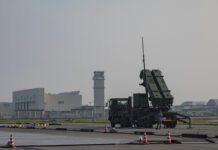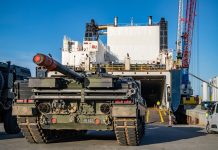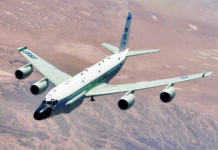For Russian and Ukrainian pilots tasked with combat missions in the current conflict between their respective counties, the Almaz-Antey S-300P (SA-10 ‘Grumble’) surface-to-air missile (SAM) system must be a constant worry. In service with both sides, it has a mobility and range that makes enemy coverage of the contested airspace hard for either side to predict. As Europe once more gears itself up for the possibility of armed conflict with a peer/near-peer opponent, obtaining meaningful long-range air defence capabilities has become more important than ever.
A Long History
When the first surface-to-air missiles (SAMs) entered service some 70 years ago, these typically had ranges of around 50 km, so were in what we would now consider the medium-range category, and were often intended to defend cities or important military facilities. Although movable, in practice they were transportable rather than mobile. Lighter and more mobile systems followed, with ranges of up to 10 km. These were fielded to protect high-value relocatable assets, and in shorter-range forms to protect mobile formations. The emergence of man-portable weapons with ranges of up to 5 km or more completed this short-range coverage.
As missile systems evolved, the maximum range of the heaviest category increased. The MIM-14 NIKE HERCULES fielded by the USA in 1958 had a range of 140 km, while the BLOODHOUND Mk2 deployed in 1964 by the UK could manage 190 km. These levels of performance were eclipsed in 1959 by the Boeing CIM-10 BOMARC which had a range of 400 km in its original BOMARC A version, followed in 1961 by the 700 km-range BOMARC B. The longest-range system created by what was then the Soviet Union was the 300 km-range NPO Almaz S-200 (SA-5 ‘Gammon’) introduced in 1966.
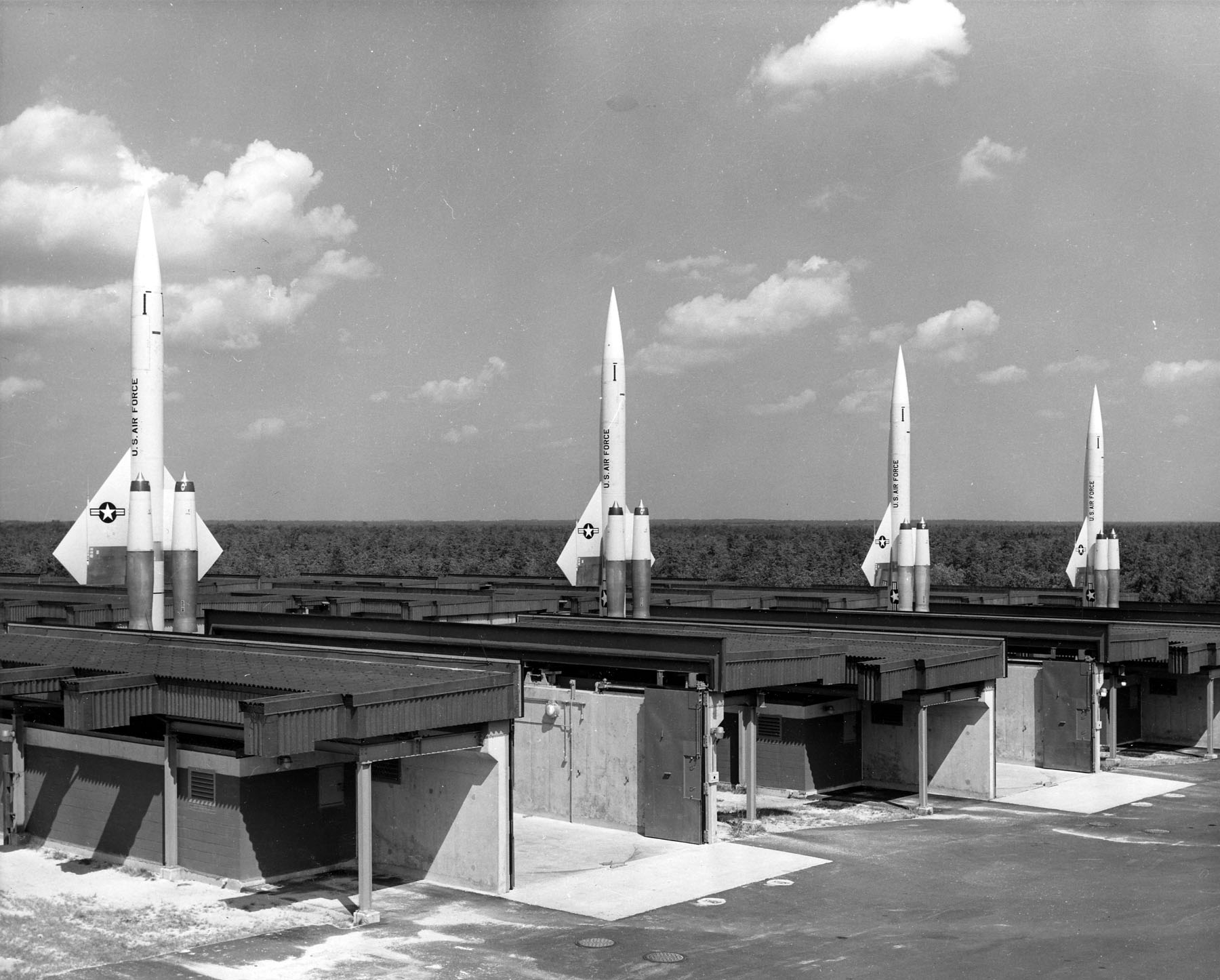
This quest for long range created problems for the designers of SAM systems. For a start, more powerful and longer-lasting propulsion systems were essential. One solution was to use a rocket booster to provide the initial impulse, then rely on an air-breathing powerplant such as a ramjet. Designs that relied on rocket propulsion inevitably become larger and heavier in order to meet ever-increasing demands for range. A SAM with a range of 400 km will be similar in size and weight to a tactical ballistic missile in the same performance class.
Early medium-range SAM systems such as the NIKE AJAX and S-75 DVINA (SA-2 ‘Guideline’) used radar-based command guidance, and this was retained for the NIKE HERCULES. Target and missile were both tracked by radar. Guidance commands were generated by ground-based electronics, which in those days were bulky and power-hungry, and these commands were then transmitted to the missile either via the radar beam that was tracking the missile, or by means of a dedicated radio link.
This technique proved less effective at longer ranges, where the radar beam would become ever-wider, reducing the accuracy of target tracking. Some form of terminal homing was needed, and the most common solution was to fit the missile with a seeker designed to exploit the radar energy reflected by the target. Known as semi-active radar homing (SARH), this technique became a common solution for many types of medium and longer-range SAMs, but requires the services of a radar system or a dedicated radar illuminator to illuminate the target throughout the duration of the engagement.
The Emergence of Modern Guidance
Raytheon’s MIM-104 PATRIOT was the first SAM to use what is often referred to as track-via-missile (TVM) guidance. Instead of using data from a nose-mounted SARH seeker to generate guidance commands using on-board electronics, the missile transmits seeker-derived relative bearing and velocity data for the target back to the ground-based fire unit, which then computes the optimal trajectory for interception, and transmits this to the missile. A similar technique known as Seeker Aided Ground Guidance (SAGG) is used by some Russian missiles, and may involve less processing of the seeker-derived data by the missile prior to transmission to the ground. If the ground-based radar uses phased-array technology, it may be able to conduct simultaneous TVM engagements against multiple targets.
If extreme ranges are required, the missile cannot rely on the radar services of the site that launched it. One potential solution is rely on data from other radars and sensors, a concept used by the US Navy’s COOPERATIVE ENGAGEMENT CAPABILITY (CEC). However, this depends on the availability of reliable and jam-resistant datalinks, and the computing power needed to combine multiple data streams into a single, integrated real-time air picture.
The use of an active-radar seeker removes the need for a ground-based fire-control system (FCS) or radar illuminator to continuously track each target. The missile can be given an initial target track and predicted intercept course, then launched. It is not necessary for the target to have been tracked by a battery’s ground-based radar; given sufficient networking from other components of an integrated air defence system (IADS), missiles can be launched against targets not being tracked locally.
The small size of an active-radar seeker limits its power output and antenna gain, and thus the maximum range at which it can detect and track a target. However, if the target can be illuminated by the launch site, the seeker can operate in SARH mode before making a final transition to active mode. Once the missile seeker head goes active, it must acquire the target, but this may not be easy during long-range engagements in which the target is out of range of the battery radar, or is at a low altitude that does not offer a direct line-of-sight back to the battery radar, known as being below the radar horizon. An active seeker mounted on a long-range SAM is probably going to be activated at a time when the missile is flying the downward part of a near-ballistic trajectory, and the on-board software will have to determine which, if any, of the detectable objects is the desired target.
Map-style diagrams showing a potential 400 km range for a SAM system may look impressive in a news report or a company brochure, but will almost certainly be over-optimistic, ignoring real-world factors that can limit long-range capability. One problem with all long-range SAM systems is that the earth’s curvature creates a radar horizon that prevents the radar from observing long-range targets that are flying at lower altitudes. Terrain features such as hills, mountains, or tall buildings may also restrict the range of altitudes at which targets can be detected.
To overcome this problem, some Russian SAM systems have the option of mounting their radars on a mast. For example, the 76N6 (‘Clam Shell’) low-altitude acquisition radar used with the S-300 can be mounted on a 40V6M or 40V6MD mast which raises the radar’s FA-51MU antenna head subsystem, and hence antenna boresight, to heights of around 24m and 38m respectively. Although masts do provide some improvement in low-altitude coverage, a penalty must be paid in terms of longer setup and takedown times, an undesirable situation in a world where ‘shoot and scoot’ tactics are an essential aid to survivability.
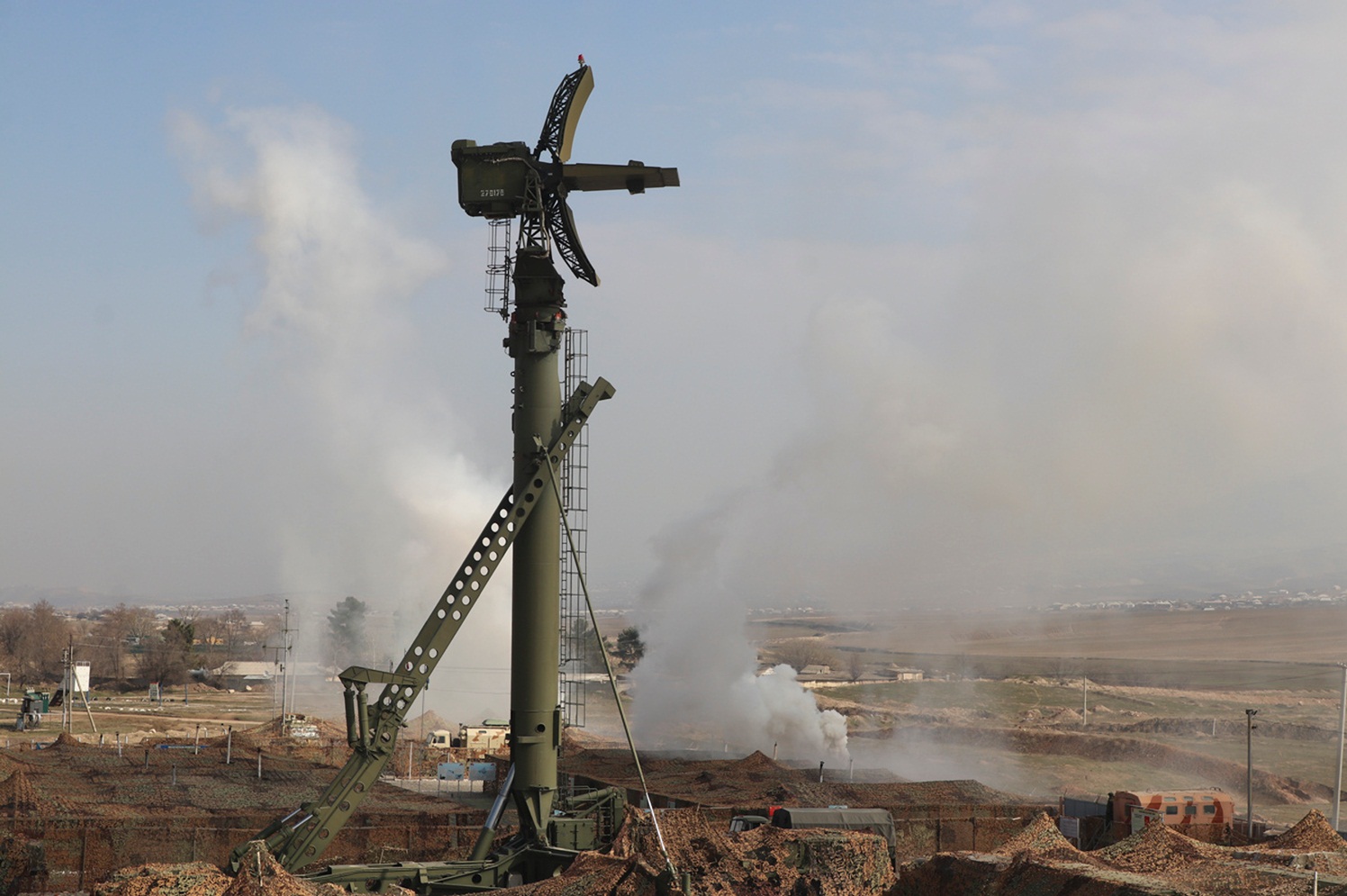
US and European Efforts
The PATRIOT family has now been selected by 18 nations, including eight members of NATO. It has become the weapon of choice for most NATO allies who wish to deploy long-range SAM systems. Switzerland was the most recent country to adopt PATRIOT, and Raytheon Technologies has teamed up with Swiss companies Mercury Systems, Rheinmetall Air Defence, and RUAG. It intends to work with RUAG to set up the first PATRIOT European regional centre for maintenance, repair & overhaul.
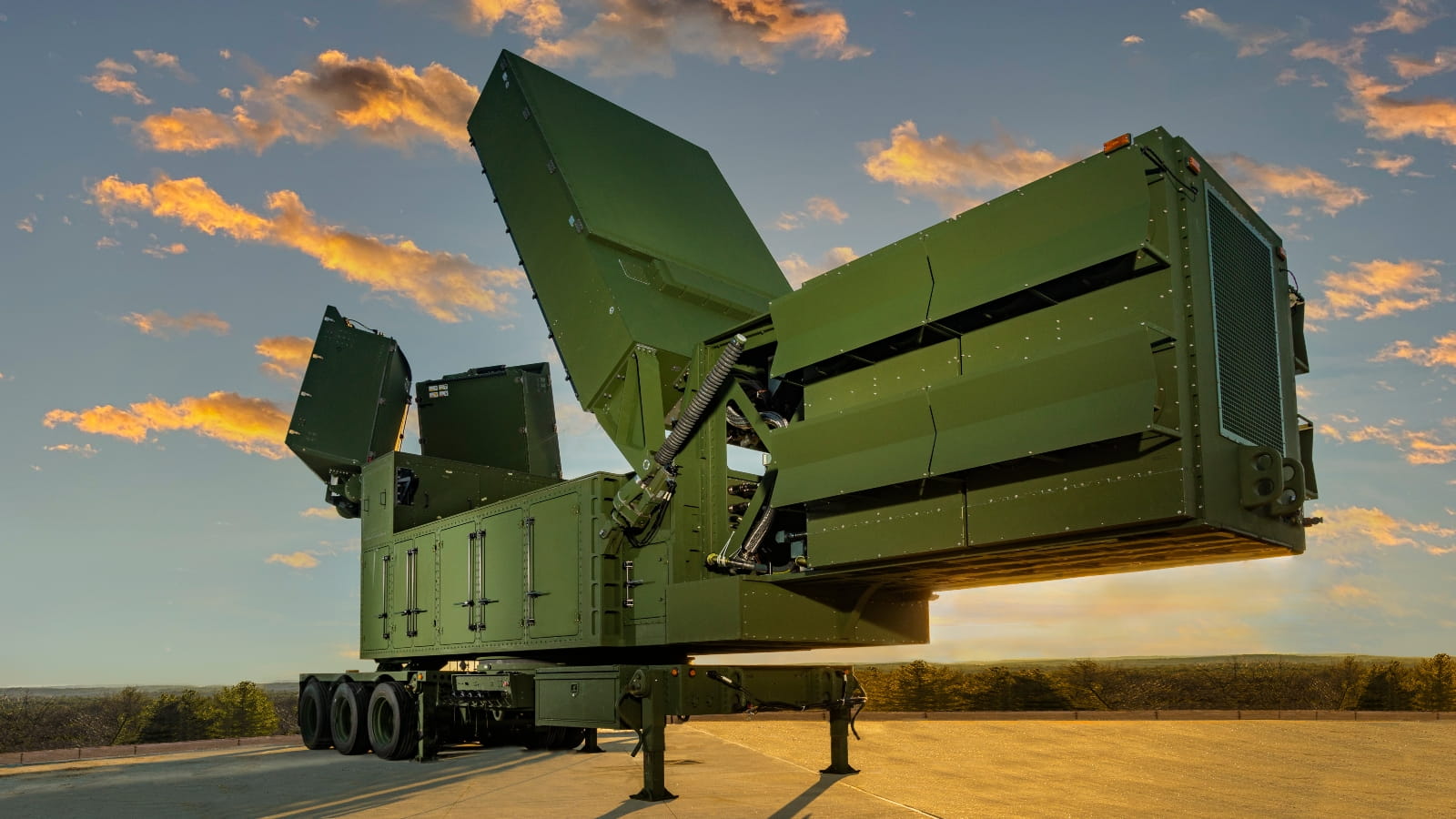
First tested in November 2015, Post-Deployment Build 8.1 (PDB-8.1) is intended to improve the PATRIOT system’s ability to destroy threats. Romania is the first user due to receive PDB-8.1 standard hardware, but the upgrade can be retrofitted into existing fire units.
One significant part of PDB-8.1 is the introduction of a new Warfighter-Machine Interface (WMI). This introduces user interface (UI) features such as 3D visuals, easy-to-read status pages, and search functions that are similar to features often found in video games, so will be familiar to the new generation of recruits. Tests have shown that the WMI improves operator reaction time and reduces the potential for errors during engagements, and additionally, operator training time is also reduced. In 2018, the US Army decided to field the WMI with all 60 of its PATRIOT fire units and at both the battalion- and battery-level command and control level, with initial operational capability expected in 2023.
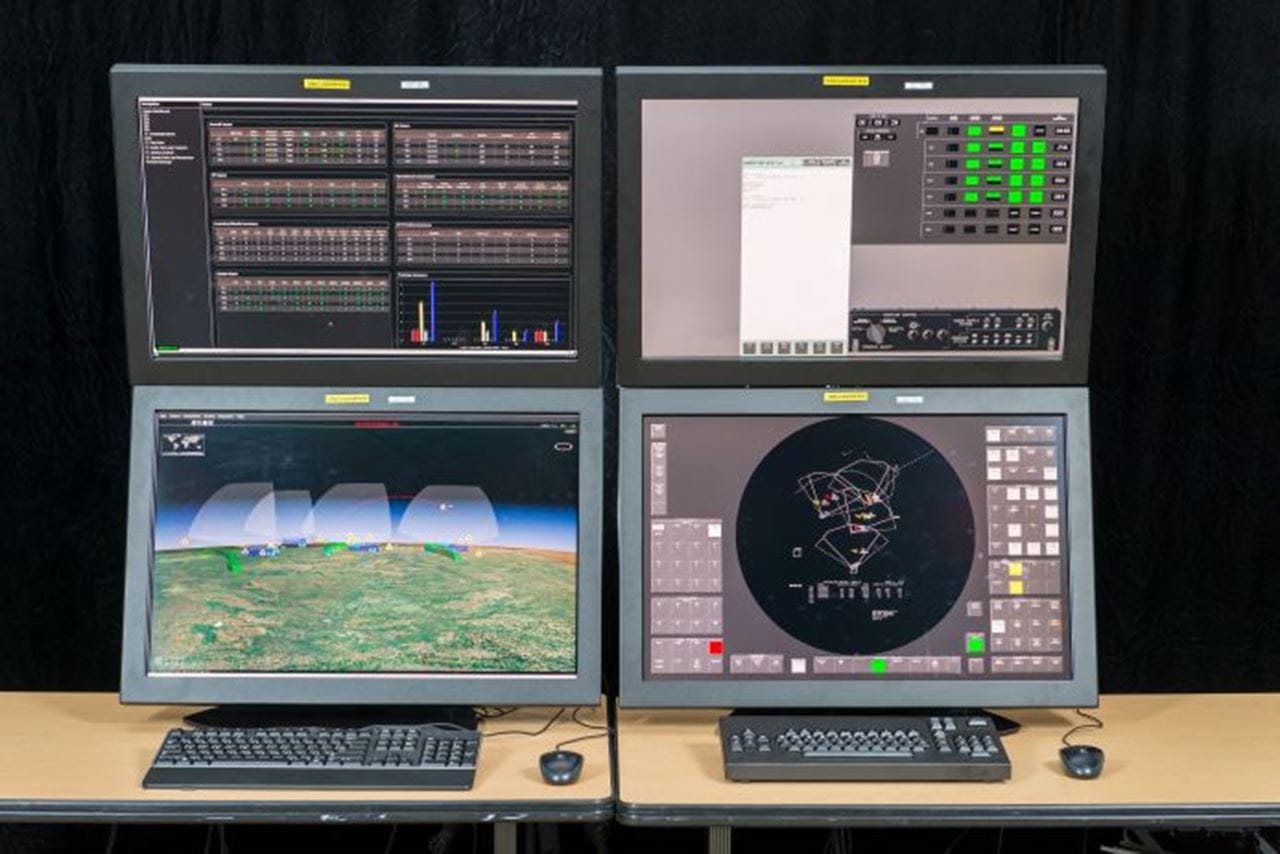
The UK opted not to replace its BLOODHOUND long-range SAMs when these were phased out in 1991, but France and Italy went the European route when they developed and fielded the EUROSAM SOL-AIR MOYENNE-PORTÉE/TERRESTRE (SAMP/T) system based on ASTER 15 and ASTER 30 vertically-launched missiles. This was designed to cope with aircraft, UAVs, cruise missiles, standoff missiles, anti-radiation missiles, and tactical ballistic missiles. Naval systems such as the SYSTÈME ANTI-AIR MISSILE (SAAM) and PRINCIPAL ANTI AIR MISSILE SYSTEM (PAAMS) were also developed to use the same missiles, and have been adopted by ten navies, but the land-based SAMP/T has only attracted three customers – the French Air Force, the Italian Army, and the Republic of Singapore Air Force. An upgraded version of the ARABEL long-range radar was developed under the ASTER 30 Block 1 upgrade programme, and gave the system the ability to intercept ballistic missiles with a range of up to 600 km.
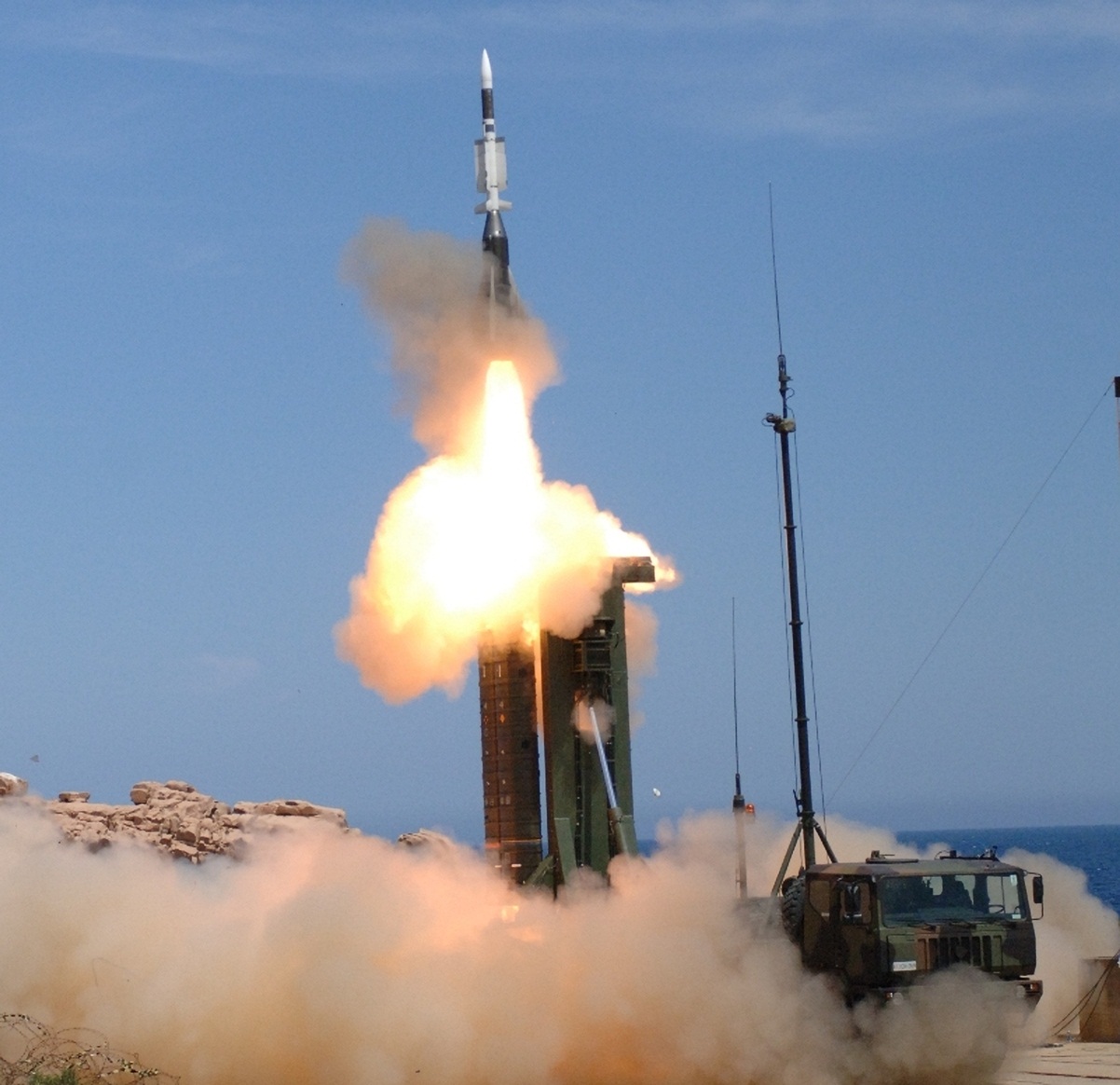
The follow-on ASTER 30 Block 1NT missile is the same size and weight as the earlier version, and uses the same solid-propellant booster, but incorporates a new seeker operating in the Ka-band (26.5–40 GHz), and a new weapon controller. The new seeker provides greater acquisition range, and can acquire targets of lower radar cross-section (RCS). The move to a higher frequency also provides a narrower antenna beamwidth, and increased accuracy of target localisation, as well as an increased probability of direct impact. If a fire unit is equipped with the new missile as well as the earlier version (which uses a Ku-band seeker operating at 12-18 GHz), this will increase the system’s potential resistance to electronic countermeasures.
Soviet and Russian Long-Range Air Defences
When used in combat, Russia’s S-200 long-range SAM has not been a great success. Having received S-200 systems in 1985, on 24 March 1986 Libya attempted to engage Grumman F-14 Tomcats operating over the Gulf of Sidra, which Libya considered part of its territorial waters. In retaliation for these unsuccessful attacks, the US Navy launched Texas Instruments AGM-88 HARM missiles against the S-200’s 5N62 (‘Square Pair’) fire-control radar.
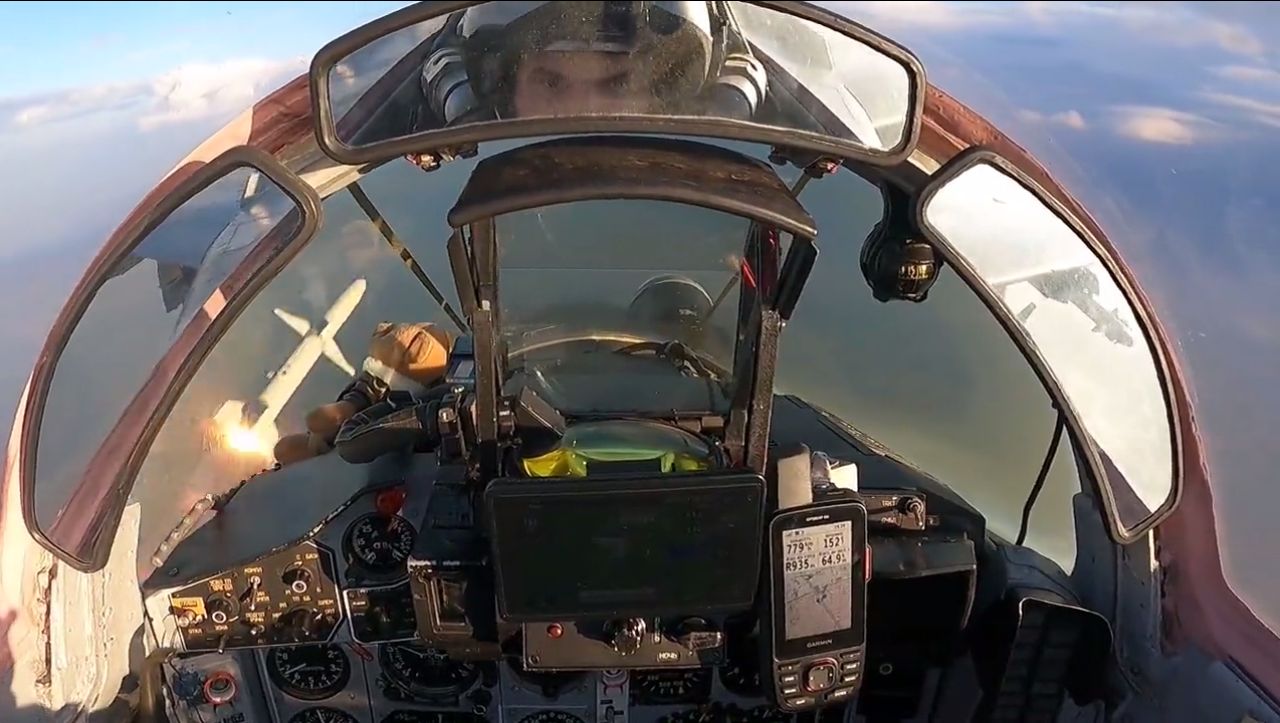
Credit: Ukrainian Air Force
Syria has used its S-200 systems against Israeli aircraft operating in Syrian or Lebanese airspace, and has claimed the destruction of several of these intruders, but the only confirmed kill took place on 10 February 2018, when an Israeli F-16I SUFA crashed in the Jezreel Valley in northern Israel. A Syrian S-200 unit attempting to engage four Israeli F-16s that had launched standoff missiles after an approach over the Mediterranean Sea on 17 September 2018 shot down a Russian Il-20M ELINT aircraft that was in the same general area. Given the long range of the S-200’s missiles, these can fly a considerable distance after an unsuccessful engagement. On several occasions, Syrian launches have resulted in missile hardware landing in Israel, Jordan, and Northern Cyprus.
While PATRIOT had its ‘baptism of fire’ during the 1991 Gulf War, the S-300P series – its Russian equivalent – did not see action until 2020, when it was used by both sides during the 2020 conflict between Armenia and Azerbaijan. In September 2020, Armenia was reported to be deploying S-300P series SAM systems to the Nagorno-Karabakh region where it was engaged in combat operations with Azerbaijan. The first combat launches were made in October of that year by Armenia, which claimed to have destroyed three Azerbaijani UAVs. Azerbaijan in turn claimed to have destroyed four Armenian S-300P series systems. The conflict ended with a ceasefire taking effect on 9 November.
In 2018 Russia despatched S-300P series systems to Syria to boost that country’s air defences. On 13 May 2022 a Russian-operated S-300P series system launched against an Israeli F-16I SUFA fighter, but the engagement was unsuccessful.
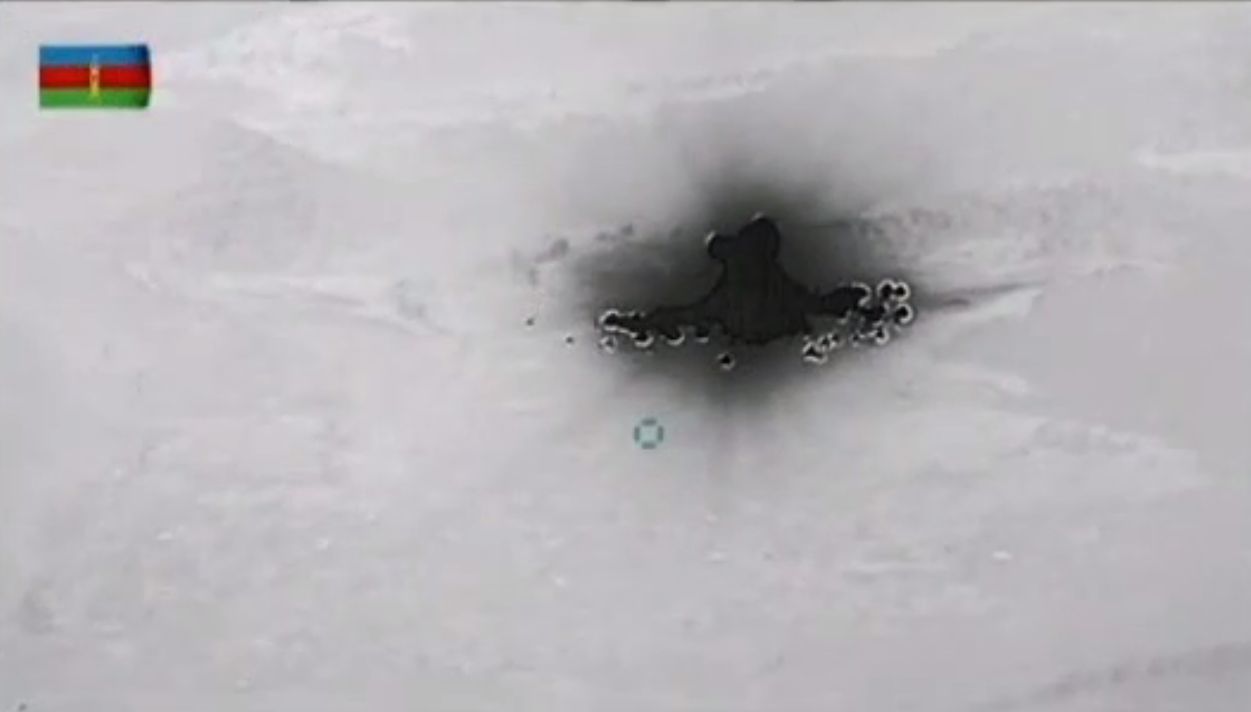
Credit: Azerbaijani Air Force
The war between Russia and Ukraine has seen significant use of the S-300P/S-300V series by both sides in a campaign that has illustrated the concept of air denial. In the past, armed forces tried to impose air superiority over the theatre of operations, controlling not only the airspace over the battlefield, but also the airspace deep into the opponent’s country, effectively denying these areas to the enemy’s air force. For both sides in the current conflict, air denial has been a more achievable goal. The S-300P/S-300V series have allowed both sides to maintain control over their own skies at medium and high altitudes, while short-range SAMs and MANPADS have made close-support operations by enemy aircraft very hazardous.
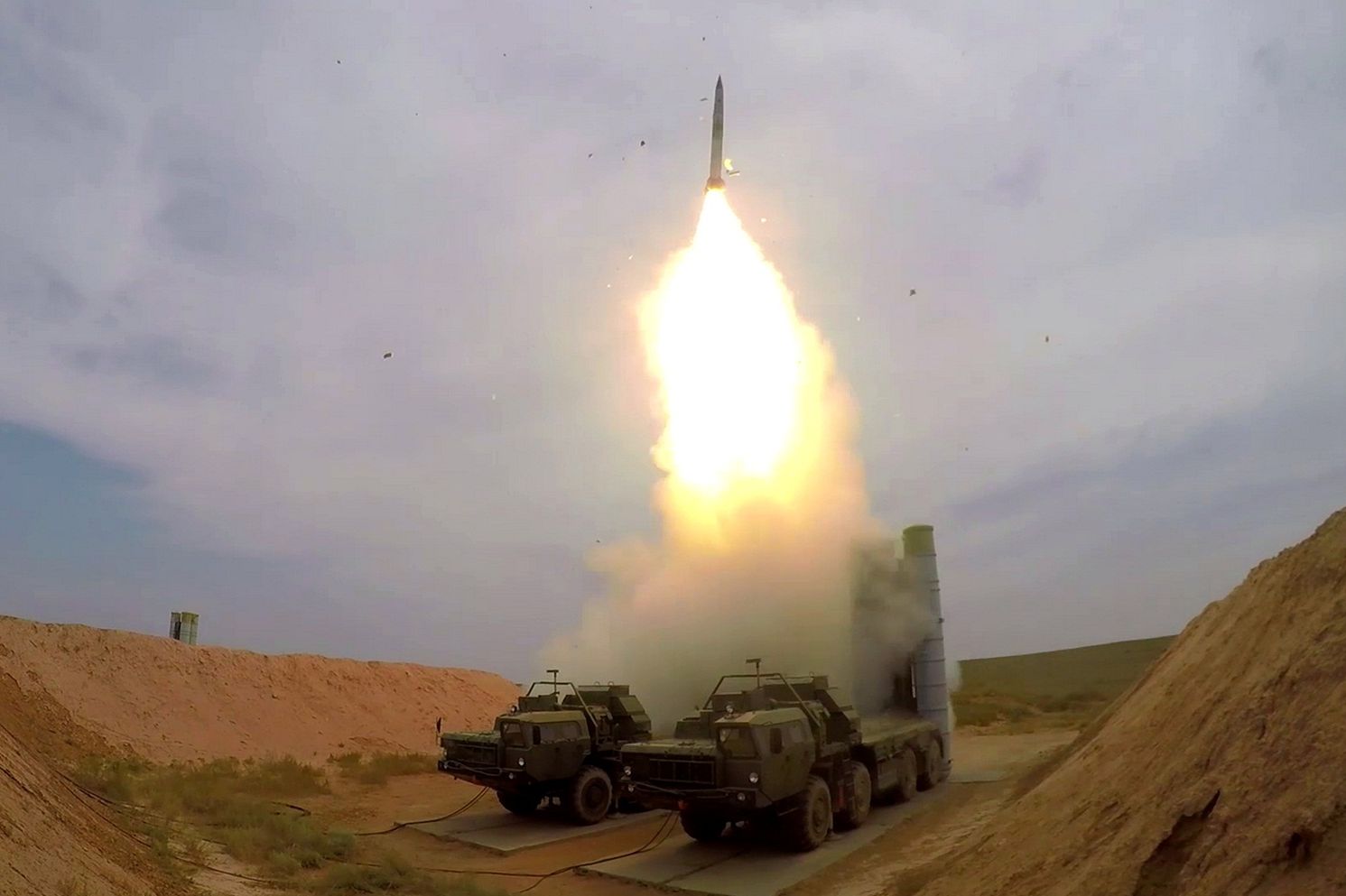
During the 2022 Air Force Association conference, General James Hecker, commander of the United States Air Forces in Europe – Air Forces Africa and Allied Air Command, stated that Ukraine had shot down at least 55 Russian aircraft, most of which had been destroyed by S-300P series and BUK-M1 (SA-11 ‘Gadfly’) SAMs.
An ability to attack ground targets is reported to have been a secondary requirement when the S-300P series was designed. As a result, some missile variants are credited with a surface-to-surface range of 120 km, a distance defined by the capabilities of its guidance system. Following a Russian attack against a vehicle convoy south-east of the Ukrainian town of Zaporizhzhia on 30 September 2022, the UK Ministry of Defence stated that “The munition involved was likely a Russian long-range air defence missile being used in a ground attack role… Its use in ground attack role has almost certainly been driven by overall munitions shortages, particularly longer-range precision missiles.” According to unconfirmed reports, Russia has retrofitted GPS subsystems into expired S-300 missiles so that these can be expended as accurate surface-to-surface weapons.
Both sides in the conflict are trying to hunt down and destroy the opponent’s deployed S-300P/S-300V family systems, and stockpiled potential replacements. Successful strikes have been claimed by both sides, but are difficult to verify.
Fielded for the first time in 2007, the Almaz-Antey S-400 TRIUMF (SA-21 ‘Growler’) can launch five types of missile – the highly agile 9M96M missile for engagements against aircraft and cruise missile targets up to 120 km distant, the 48N6, 48N6M and 48N6DM, intended to deal with air threats (including some types of tactical ballistic missile) at ranges of up to 150 km, 200 km, and 250 km respectively, as well as the heavyweight 40N6 for targets up to 400 km away. Known S-400 deployments outside of the Russian mainland have included Kaliningrad, the recently-annexed Crimea, as well as Khmeimim Airbase and Tartus Naval Base in Syria, where they were tasked with protecting Russian and Syrian assets. The S-400 has also seen combat action in the war between Russia and Ukraine, with at least two successful engagements reported.
In 2015, China signed an order for six battalions of the S-400 system, and a first test launch by China was reported in August 2018. The most controversial order for the S-400 was that placed by Turkey to meet a reported requirement for four batteries. Deliveries started in 2019. Dmitry Shugayev, head of Russia’s Federal Service for Military-Technical Cooperation, claimed in August 2022 that Turkey had ordered a follow-on batch, but this has not been confirmed. India placed an order in 2018, and deliveries began in late 2021, with deployment of the first unit under way by the end of the year. In 2021 Belarus announced that it was negotiating an S-400 purchase, and a deal was confirmed in May 2022.
While the S-400 used to represent the outer tier of mobile air defences operated by the Aerospace Forces (VKS), the recently developed S-500 is now intended to provide Russia’s new outer tier. The S-500 system is armed with the 77N6-N and 77N6-N1 missiles, the former of which is understood to use a ‘hit-to-kill’ defeat mechanism, and is primarily intended for engaging ballistic missiles and their warheads.
The Almaz-Antey S-350 VITYAZ (SA-28) was developed to replace the S-300PS (SA-10b ‘Grumble’), and to act as a lower-tier supplement to the S-400. It uses the 9M96M missile (originally developed for the S-400) for engagements against aircraft and cruise missiles out to a range of 120 km. Targets at short range can be handled by the 9M100 missiles, which are understood to use active radar seekers. Mass production is reported to have begun in April 2019, leading to first deliveries by the winter of that year. S-350E is the export version, and uses the 9M96E missile. The first export customer was probably Algeria, which had deployed it on at least one air base by mid-2022.
Foreign Competitors Emerge
China’s CASIC HQ-9 is based on the Russian S-300, but uses a locally-developed guidance system and radar. The initial version was followed into service by the improved HQ-9A variant fielded in 2001, and the HQ-9B which is thought to have supplemented the radar seeker with a passive infrared seeker. Known export customers for the HQ-9 are Algeria, Morocco, Turkmenistan, Uzbekistan, and Pakistan (which ordered a variant designated HQ-9/P).
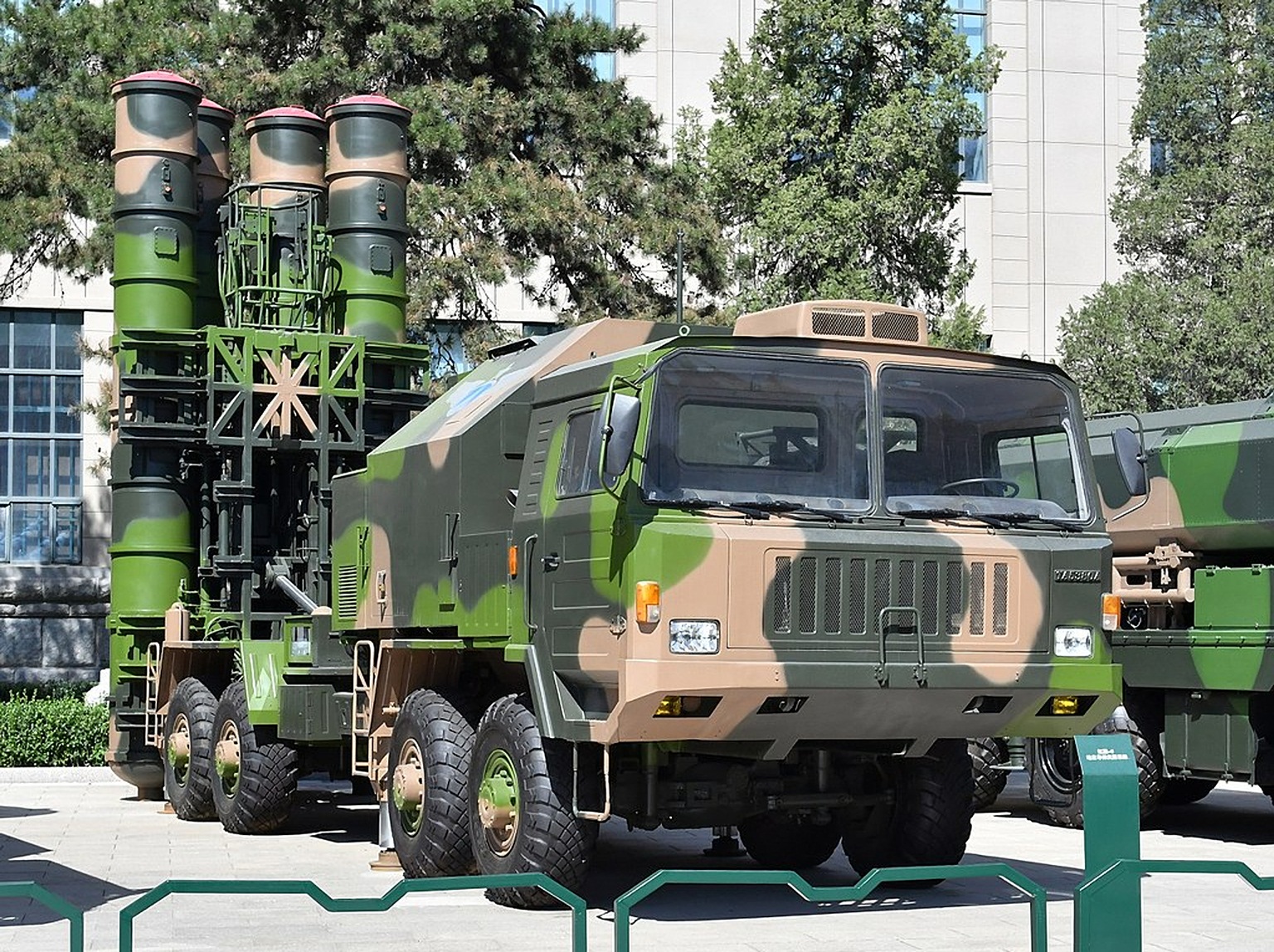
Credit: Tyg728 via Wikimedia Commons
Turkish interest in the Chinese HQ-9 and a possible co-production agreement were widely reported around a decade ago, but in 2015 Turkey opted to develop an indigenous solution. HISAR-U SIPER is a long-range SAM system being developed at National Technology Development Infrastructures (MTGA). Reported to combine a dual-pulse solid-propellant rocket motor and an active-radar seeker for terminal guidance, the new missile is expected to have a maximum range of more than 150 km after being vertically-launched from 8×8 MAN Türkiye wheeled transporter, erector, launchers (TELs). Roketsan is responsible for developing the missile, while Aselsan is developing the associated radars.
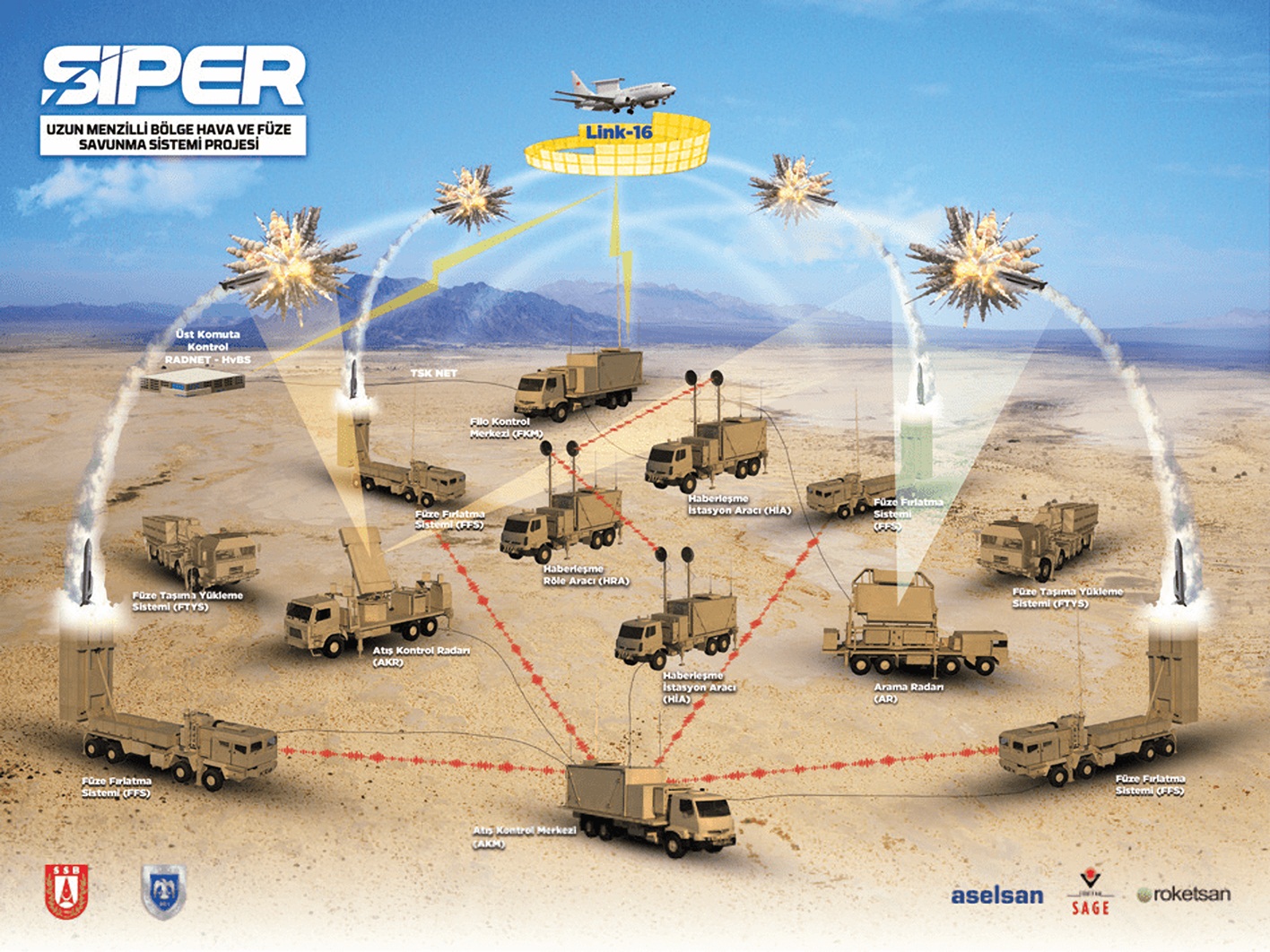
Announced in 2019, Iran’s KHORDAD-15 SAM system is an upgraded version of the earlier TALAASH system first shown in 2013. It combines the locally-developed Najm (Star) 804 phased-array radar with a truck-mounted launcher able to use the 120-150 km range SAYYAD-3 missile or the shorter-range SAYYAD-2. The latter is essentially a copy of the US RIM-66 Standard Missile (SM-1) naval surface-to-air missile that had been sold to Iran prior to that country’s 1978/79 revolution, but SAYYAD-3 features an extended fuselage with redesigned wings and control surfaces.
Iran had ordered S-300P series systems in 2007, but Russia postponed fulfilment of the order as a result of international sanctions against Iran. The S-300P series did not enter Iranian service until 2017, by which time development of the indigenous BAVAR-373 (which was intended to match or exceed the capabilities of the S-300P series) was at an advanced stage. The first BAVAR-373 prototype was completed by late 2011, but the system was not ready for service until 2019. BAVAR-373 uses canisterised SAYYAD-4 missiles that are vertically launched from a Zoljanah 10×10 truck-based TEL, and a locally-developed phased-array acquisition radar mounted on a Zafar heavy truck. SAYYAD-4 is similar in configuration to the SAYYAD-3, but is reported to incorporate a thrust vector control system, and to have a maximum range of 200 km.
Technology from the BAVAR-373 or S-300 has probably been incorporated into North Korea’s KN-06. This is reported to use vertically-launched missiles that are shorter in length, but greater in diameter than those of the S-300. Maximum range is thought to be 150 km. Development ended in 2017, so the system is probably in service.
Long-range Systems’ Impact on the Wider Battlefield
In most recent conflicts, one side has been able to achieve and maintain air superiority over the other. The opponent often lacked modern long-range SAMs, so the attacker was able to fly at medium altitude, remaining above the coverage of the defender’s vehicle-mounted SAMs or MANPADS. Suppression of enemy air defences (SEAD) was also usually achievable.
However, as the war between Russia and Ukraine is currently demonstrating, the S-300P/S-300V and SAMs of similar performance can make medium and high-altitude flight impractical in hostile airspace. This should have forced combat aircraft on both sides to descend to low level, and face the inevitable attrition created by vehicle-mounted SAMs or MANPADS, but the Ukrainian Air Force seems to have anticipated this situation and trained its pilots to fly effectively at very low levels in order to minimise exposure to these short-range systems. Yet even so, flying at such low altitudes comes with a host of downsides – it increases the risk of accidents, reduces the effective range of the aircraft’s sensors, and demand fast reactions by pilots, so they may not prove a long-term solution to aircraft survivability.
A more likely way forward might be improved SEAD tactics and their associated weapons. Ukraine has already been provided with the AGM-88 HARM, and has used this in combat. A video recording released by the Ukrainian Air Force shows a MiG-29 launching an AGM-88 from the sort of medium altitude that may have provoked a Russian threat radar to begin emitting.
Integrating a new type of missile onto an existing aircraft is not a quick process, and normally requires a significant number of test launches, so it will be interesting to learn at some time in the future how the AGM-88 was integrated with the MiG-29 in such a short time, and which company or companies tackled the job. Unofficial reports have suggested that the electronic interface between the missile and the aircraft causes the latter to ‘see’ the US missile as an R-27P (AA-10 ‘Alamo-E’), a Russian anti-radiation missile that the MiG-29 avionics are able to handle.
In summary, missile systems in the performance class of the PATRIOT, SAMP/T, and S-300P/S-300V/400 are not an air-defence panacea, but they may force a potential opponent to make changes in air tactics and anti-radar weaponry, which in turn can act as an enabler for other forces, by making them less likely to be engaged from the air. However, countries shopping for this class of SAM will need to be sure that potentially cut-price solutions from suppliers such as Iran or North Korea can match the performance of US, European, and Russian systems.
Doug Richardson







